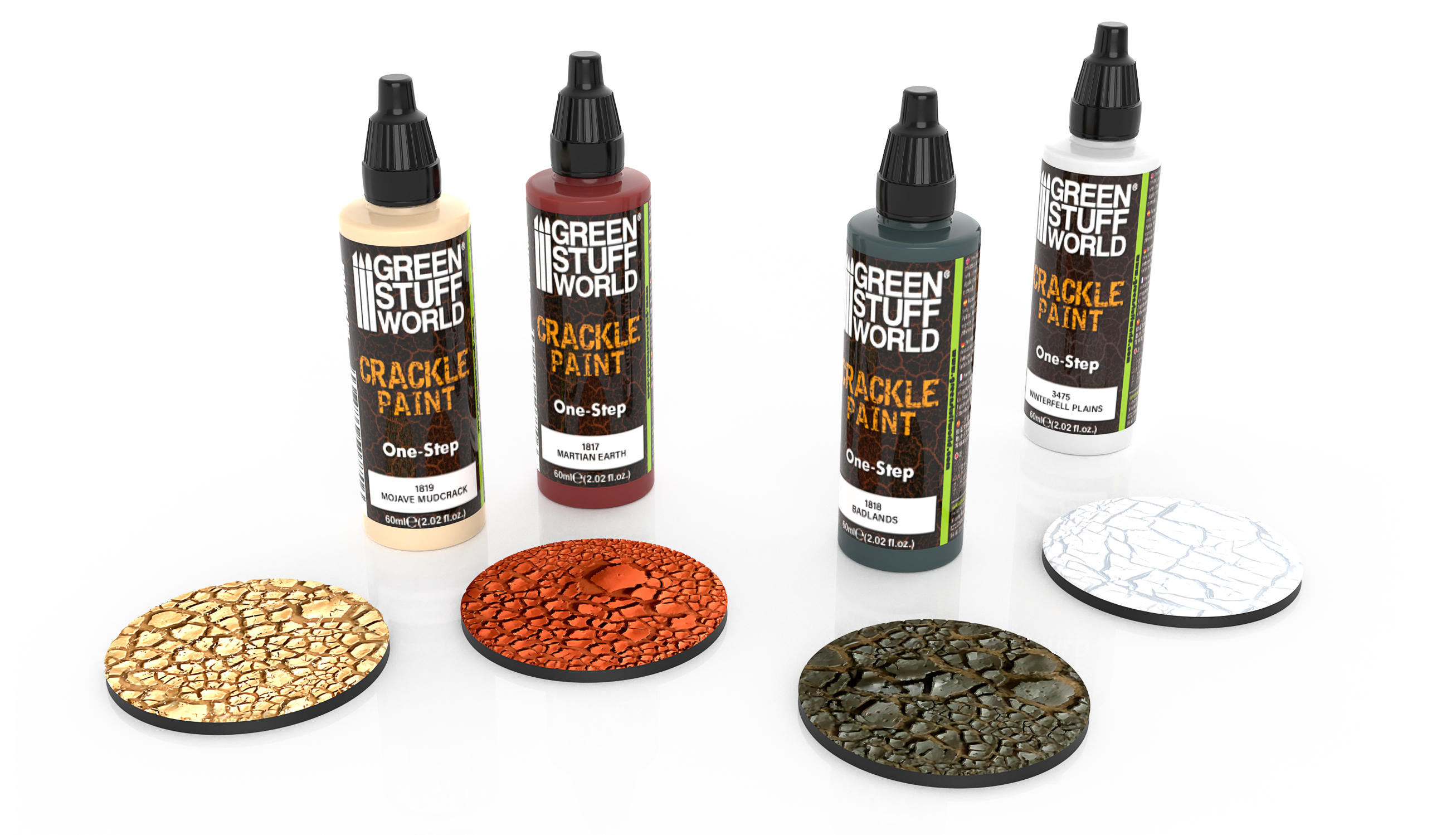Reference: 8435646508351ES
Brand: Green Stuff World
Crackle Paint - Winterfell Plains 60ml
A unique product that will create amazing cracks.

There are 4 products.
Reference: 8435646508351ES
Brand: Green Stuff World
A unique product that will create amazing cracks.
Reference: 8436574501766ES
Brand: Green Stuff World
Crackle Paint, a unique product that will create amazing cracks or weathered effects.
Reference: 8436574501773ES
Brand: Green Stuff World
A unique product that will create amazing cracks or weathered effects.
Reference: 8436574501780ES
Brand: Green Stuff World
A unique product that will create amazing cracks or weathered effects.
Crackle paint it's a type of acrylic paint that is specifically formulated to create a crackled or distressed appearance on a surface. When applied over a base coat, the topcoat of this effect paint will crack and split, revealing the color of the underlying layer. This can be used to create a vintage or aged look on furniture, walls, or other decorative items, although it is widely used in miniatures, figures, and other elements in dioramas and scale models.
There are different types of special colors available depending on color and transparency, such as Martian Earth, Badlands, and Mojave Mudcrack with color, and then the transparent version Winterfell Plains. Colored ones could be mixed with weathering pigments to achieve new colors.

This popular effect is a technique that creates a cracked, distressed look on a surface. This can be achieved by applying a layer over a base coat. It has been formulated with a cracking agent that causes the topcoat to crack and split, revealing the color of the underlying layer. The size and pattern of the cracks will vary depending on the amount of product that is applied and the method of application.
To answer the question of how to crackle paint and get a nice cracked surface, you will need to follow these steps:
Things or additions that could alter its performance would be, for example, adding white glue, increasing the dilution with some medium or even water, and too much liquid colorant, which could affect its behavior. If you want to modify the color, we recommend adding only earth pigments in powder form that will not change it too much its base, and also increase its density.
Remember to experiment on a small scale before applying any modifications to a larger project, as these types of effects can be unpredictable. Finding the right combination of elements is key to achieving the desired crackle effect.
The cracking effect is a versatile technique that can be used on a variety of surfaces by model makers, painters, and other hobbyists and craft enthusiasts, but it may not work well or at all on certain surfaces. Some examples of surfaces where these distressed paints may not work well include:
It's important to test it on a small, inconspicuous area of the surface before applying it to the entire surface, to ensure that it will work well and achieve the desired finish.
In general terms, a crackle medium is just a crackle paint without color, basically a type of substance used in art and craft to create an aged appearance on surfaces. It is often applied between layers of other colors or even varnish. As the top color dries, it will cause breakage., revealing the underlying layer and giving the finished result a weathered and aged look.
When used for decorating miniature bases, it is applied over a base coat on the base's surface. Once dry, it would be normally just finished, but sometimes it is good to dry brush another different color on top. This technique adds depth and character to the miniature base, making it look weathered and worn, which enhances the overall appearance of the miniature figurine or model.
Most of Green Stuff World's crackle paint contains color, so it is not necessary to add other types of paints after obtaining the effect. However, it is possible to do so if the project requires it. In fact, this will improve the final finish of the surface on which it has been used. It is advisable to apply powder pigments, which will increase its density without damaging the base.
Another option is to mix the colored paints with weathering pigments to create different colors.
Finally, transparent one needs color, so it can be added with any of the above techniques. It is also possible to leave it unpigmented, natural, to create a crackle paint effect that resembles cracked ice or similar.
Adding colors is not incompatible with the various fixatives, so a coat of varnish or a dilution of glue can still be applied. Thus, the effect will be sealed, more resistant, and will last much longer.
Not what you were looking for? We recommend our spray chameleon paint, paint mat and the blackest black paint.